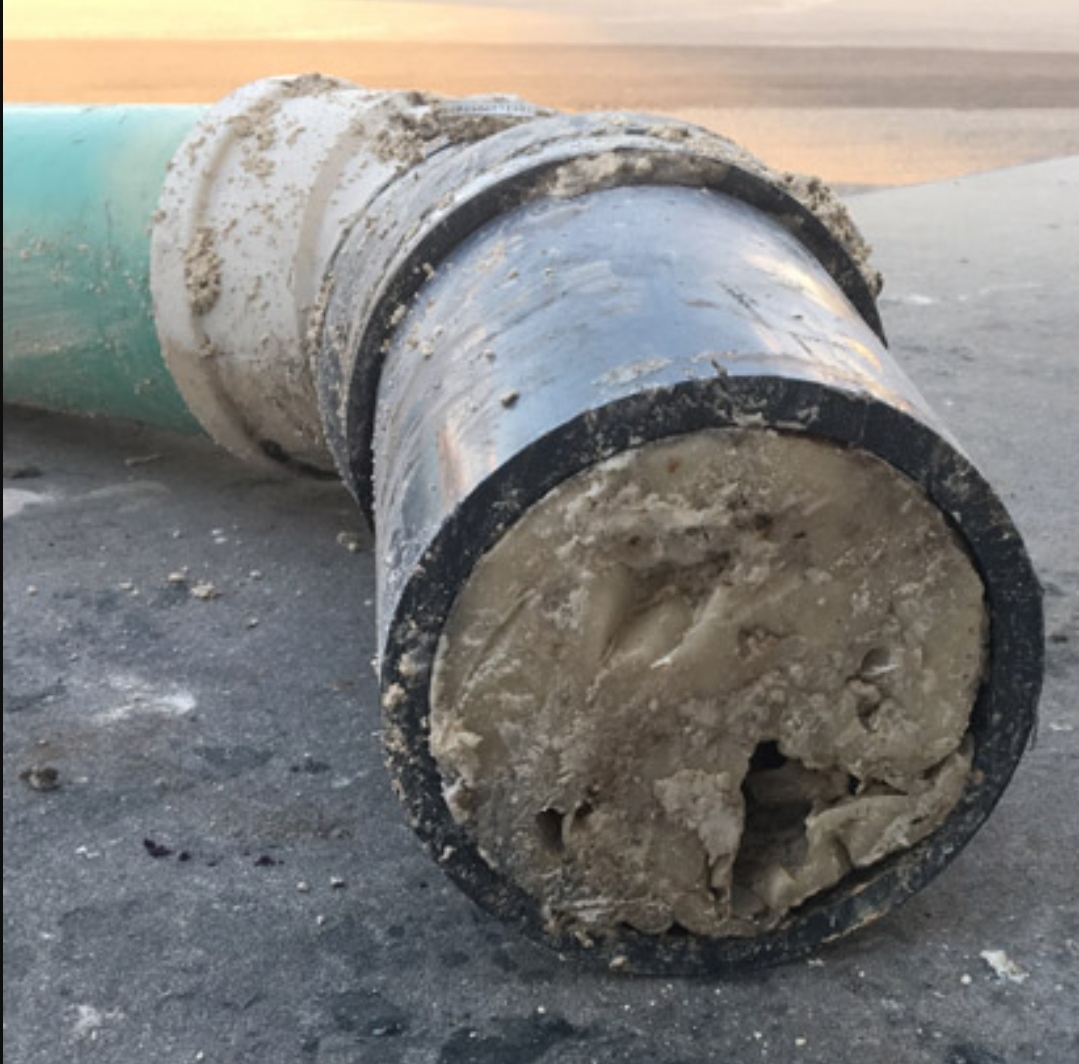Paraffin wax is a white, odorless, waxy solid that naturally occurs in petroleum. It was first discovered in 1830 and represented a significant advance in the candlemaking industry as a cleaner, more reliable candle fuel. Today paraffin exists in far more than just candles. Crayons, cosmetics, anti-caking agents, metal lubricants, propellants, and more contain paraffin wax.
The production and use of paraffin grew in the early 20th century due to the growing oil industry. A by-product of petroleum and its refining processes, Slack Wax, a mixture of oil and wax, becomes paraffin when the oil is removed from the wax through crystallization. The more oil that is removed, the more refined the paraffin wax becomes. The wax can be further processed and blended to create specific properties like melting point and penetration, making paraffin very versatile.
Although paraffin wax is a useful product, it can cause problems when it’s in the wrong place. Buildups of paraffin wax in pipelines and oilfield equipment can cause blockages and hinder flow.
Read on to learn more about the properties, uses and remediation solutions for paraffin wax.
1. Paraffin wax is an excellent electrical insulator
With a melting point between 115 and 154° F, paraffin wax is unaffected by most reagents but burns readily. In chemistry, the words paraffin and alkaline are used interchangeably and refer to hydrocarbons with an unreactive nature. Its melting point and unreactive nature make paraffin an excellent electrical insulator. Paraffin is a better insulator than nearly all other materials, except some plastics like Teflon. It holds up to intense heat and was used to cool the electronics of the Lunar Roving Vehicle in the early 1970s.
2. Paraffin wax is used in lava lamps
In lava lamps, the mesmerizing flow of colors from the bottom to the top and back again is made possible by the chemical properties of paraffin. Paraffin mixed with mineral oil and tetrachloride is heated at the base by a halogen lamp. At room temperature, the wax is denser than water and sinks to the bottom. As it is heated, the wax expands, lowering its density, and the wax blobs float to the top. As the wax cools, it sinks to the bottom, and the chemical process begins again.
Paraffin’s versatility is due in large part to its ability to be modified with additives. Additives alter the properties so that paraffin can be used in many applications. From stabilizing explosives to chewing gum, paraffin’s use is abundant. It’s in crayons, chewing gum, and bicycle chain oil. It functions as a bullet lubricant, surfboard wax, and a moisturizer in cosmetics, most notably Vaseline.
3. Paraffin can block passagewaysBecause paraffin wax creates a water barrier, its use in cosmetics creates a barrier over the skin to retain moisture. In some cases, it can clog pores and create problems not intended by the user. Before it is chemically separated from petroleum, paraffin can cause problems in oil production equipment. The paraffin can collect inside the pipeline causing blockages. Because the consistency of paraffin wax depends on its temperature, the colder temperatures of subsea and underground drilling cause paraffin clusters to form within the crude oil. As it travels through the production system, the larger clusters of paraffin collect inside the systems causing blockages and limiting the flow of crude.
Paraffin build-up is a prime contributor to under deposit corrosion. Its removal is costly and can lead to high dollar losses in production, equipment repair costs, and possibly replacement. Traditionally, chemical, mechanical, and thermal treatments break up and push the wax through the system.
4. Paraffin can be broken down by many methods
In the past, managing the negative effects of paraffin required expensive methods. Traditional methods use a combination of chemical, mechanical, or thermal techniques to remove paraffin from petroleum production systems. Treatment plans are customized based on the wax formation temperature (WAT) and are different for each pipeline or well, depending on the level of blockage and the material in the pipeline.
Chemical Methods - traditional methods tend to be expensive and may have environmental implications.
- Inhibitors added at a constant rate dissolve into the crude and reduce wax formation temperature (WAT) or even eliminate it during the production process.
- Dispersants, known as surfactants or solvents, break up the paraffin deposits. Surfactants disperse and solubilize the wax deposits but cause environmental and health concerns. Highly toxic solvents also solubilize and disperse paraffin and can cause damage to equipment.
Mechanical Methods - the process leaves the inside of pipelines rough, and wax tends to adhere to roughened surfaces, promoting future wax deposits.
- Pigging involves forcing a pigging device through the pipeline, scraping the pipe walls and pushing debris ahead. Some downsides of pigging: not all flowlines can use a pigging device; stuck pigs can cause a complete blockage; and a pig cannot clear a complete blockage.
- Coiled tubing pushed through the pipeline scrapes and loosens paraffin collected within and pushes it out. Because of the tubing’s limited reach, access to blockages is challenging.
Thermal Methods
Thermal well treatment pushes hot water or oil through the system to clear the well tubulars and flowlines. Thermal treatments can push the wax into the formation, causing permeability damage.
Innovative Paraffin Wax Removal
WellRenew® and PipeRenew® from Ideal Energy Solutions, LLC are the newest advancement in removing paraffin from petroleum production systems, with results outperforming any combination of its traditional counterparts. These products are the only non-hazardous, environmentally responsible remediation solutions that neutralize the stickiness of paraffin. The specially blended treatments react with oil to make a simple soap that breaks up the paraffin, allowing it to be pumped out of the line.
Benefits of WellRenew® and PipeRenew® include:
- Biodegradable
- Environmentally responsible
- Temperature independent
- Activates with water; salt, produced, or fresh
- Suitable for land or offshore applications
- Effective in pipes of any length or size
- Consistent results
- Cost-effective
Treatments are customized to each formation and formulated to penetrate the paraffin and for rapid dispersal of the paraffin into the oil. WellRenew® and PipeRenew® are responsible for clearing blockages in production systems set for abandonment after many failed attempts to remediate complete blockages.
Learn more about PipeRenew® and WellRenew®
Now that you know more about paraffin wax, find out how to prevent it from blocking your pipes. PipeRenew® and WellRenew® are the keys to maintaining your oilfield equipment and maximizing production. Contact Ideal Energy Solutions, LLC to learn more about this innovative solution to paraffin wax removal!





